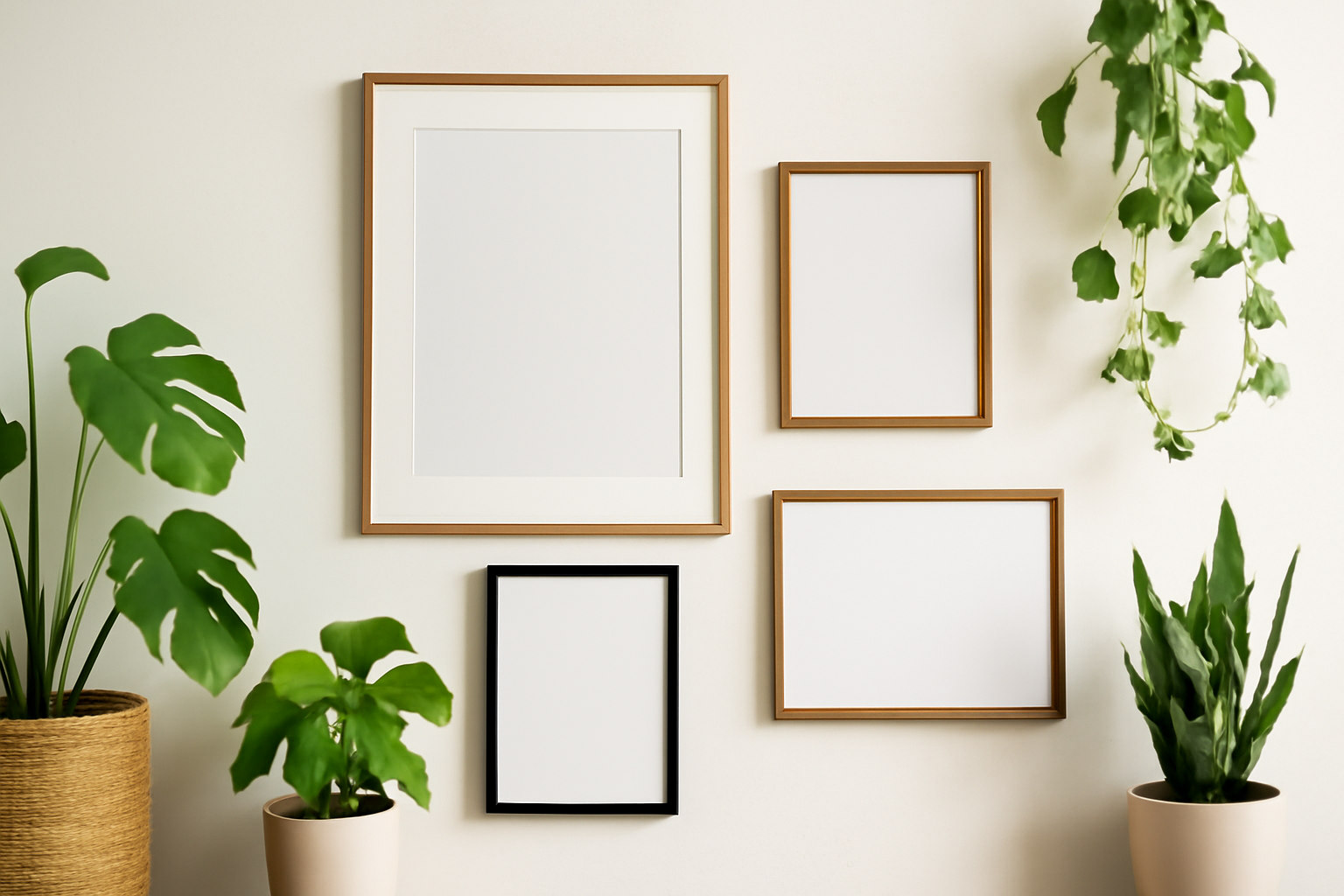Combining frames and plants is a fantastic way to create a harmonious and stylish display in any room. This combination adds both visual interest and a touch of nature, creating a space that feels fresh, cozy, and inviting. Whether you’re decorating your living room, hallway, or bedroom, integrating plants and frames can be an easy yet effective way to add personality to your home. In this article, we will explore how to combine plants and frames to make a beautiful composition that enhances the aesthetic of any space.
Start with the Right Location
Before diving into choosing frames and plants, it’s essential to select the best location for your composition. Consider areas that already have empty wall space, such as above your couch, next to windows, or along an empty hallway. A well-lit space is ideal for both plants and artwork, so be sure to place your composition in a spot where it gets natural light, especially for the plants.
If you have a larger wall, you may want to create a gallery-style arrangement with a mix of different frame sizes and plant types. For smaller spaces, keep the composition simple with one or two frames paired with a plant or small arrangement.
Choose the Right Frames
When selecting frames, keep in mind the style and tone of your space. If you’re going for a modern aesthetic, opt for sleek, minimalistic frames in neutral colors like black, white, or gold. For a more rustic or bohemian look, wooden frames can add texture and warmth to the room. You can also mix and match frame materials to create a dynamic, eclectic look. The key is to choose frames that complement the plants and don’t overpower them.
For the artwork itself, choose pieces that resonate with you and fit the style of the room. Black-and-white photography, abstract art, or botanical prints are excellent choices for a plant-filled space, as they tie in with the natural theme. Don’t forget to experiment with the orientation of the artwork—landscape or portrait, depending on the space and your visual preferences.
Choose the Right Plants
The next step is selecting plants that will complement the artwork and the overall space. For a cohesive and balanced composition, mix a variety of plant sizes, shapes, and textures. Small plants like succulents or air plants work well with smaller frames, while larger plants like ferns or monstera add drama when paired with bigger frames.
If you’re working with a collection of frames, you can pair each piece with a different plant variety. For example, position a trailing plant like pothos next to a portrait frame, or place a tall, spiky plant like a snake plant beside a larger piece of artwork. This arrangement creates a visual rhythm and draws attention to both the plants and the frames.
Play with Height and Arrangement
To create depth in your composition, use plants and frames at varying heights. You can elevate small plants by placing them on plant stands, books, or shelves, or use hanging planters for trailing plants that need space to cascade. Similarly, hang frames at different heights on the wall to create a sense of balance and interest.
For a gallery wall, arrange the frames in a grid or a more organic, asymmetrical layout depending on the style of your home. Try to balance the placement of plants with the frames by varying their position throughout the arrangement. Place taller plants on the floor and smaller ones on shelves or tables to create a dynamic, layered composition.
Maintain Balance
When creating a composition with frames and plants, it’s important to maintain balance. If your frames are heavily detailed or have bold colors, choose more subdued plants with simple leaves and neutral tones. Conversely, if your plants have vibrant foliage, opt for frames that are more subtle to avoid clashing. A balanced composition ensures that both the plants and the artwork complement each other without overwhelming the space.
Conclusion
Combining frames and plants is an excellent way to create a fresh and stylish composition in any room. By selecting the right location, choosing complementary frames and plants, and playing with height and balance, you can craft a beautiful display that enhances the aesthetic of your home. Whether you’re working with a large gallery wall or a small corner, the combination of nature and art will elevate your space and make it feel more inviting and vibrant.
